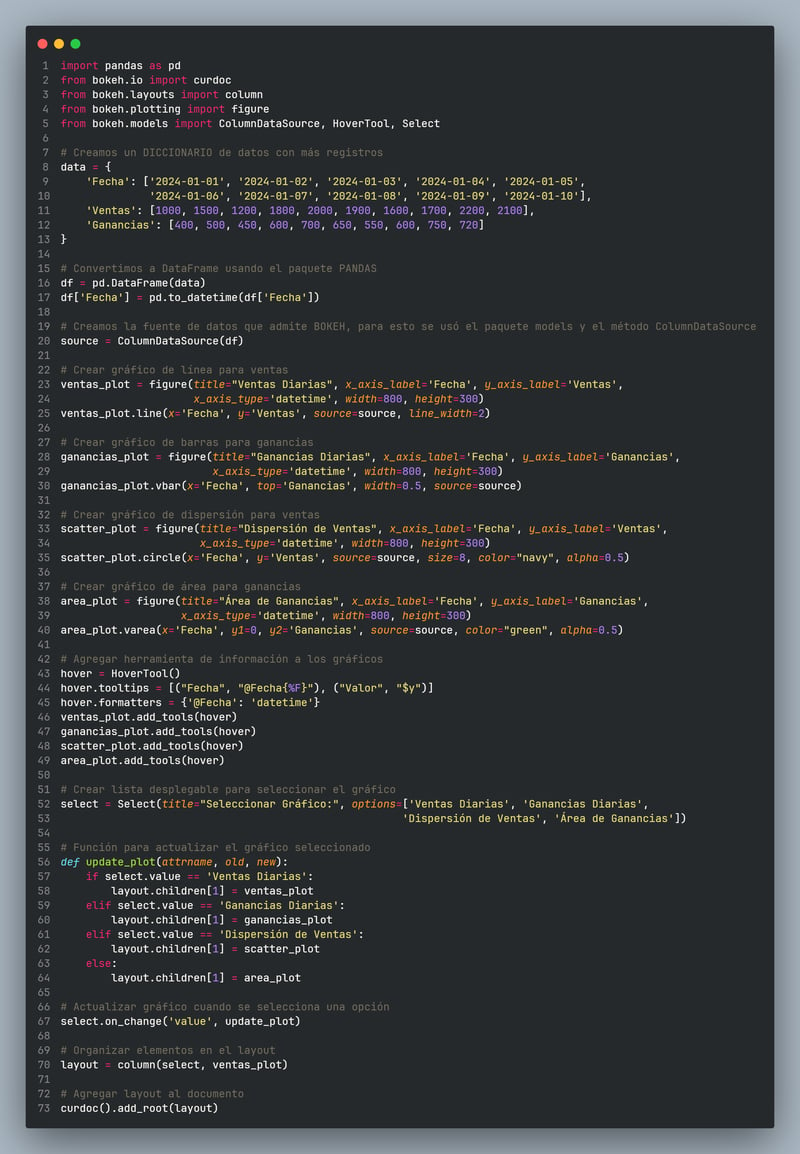Bokeh
Bokeh is an open-source Python library for creating interactive, web-based visualizations and dashboards. It provides high-performance statistical and scientific computing capabilities, making it particularly useful for data analysis and exploration.
Interactive Plots: Bokeh allows you to create highly customizable and interactive plots, such as line plots, scatter plots, bar charts, and more.
Dashboard Applications: With Bokeh, you can build complex dashboard applications that combine multiple plots, widgets, and layouts in a single web application.
Data Visualization: Bokeh is widely used for data visualization tasks, enabling you to explore and present data in an interactive and visually appealing manner.
Scientific Computing: Bokeh integrates well with other Python libraries like NumPy, Pandas, and SciPy, making it a powerful tool for scientific computing and data analysis.
Web Applications: Bokeh's ability to create web-based visualizations makes it suitable for building web applications that require interactive data exploration and presentation.
Code: A python code was developed for a dashboard with bokeh, using the panda and bokeh libraries.
- Here we have the compiled code and the generated graphics.
Creating a dashboard with BOKEH in python
Requirements:
- Python
- Visual Studio Code ### First steps
- Open visual studio code
- We create a working environment and add a .py file
- Important, to make this dashboard it is necessary to install the dependencies, for this we open a console in administrator mode and we execute
pip install bokeh
- Once installed, run the sample code to generate graphics.

As we can see we have the panda and bokeh packages imported.
Last step
- Run the project. To run the project we will open the console and paste the following code:
python -m bokeh serve --show dashboard.py
this will show the dashboard on a local page.
Deploy the project in the cloud
To deploy the project it is necessary to have a cloud service provider, in this case I used a debian VPS.
to install python in linux
apt update
apt install python3
install the environment
sudo apt install python3-venv
mkdir my_project
cd my_project
python3 -m venv my_env
pip install bokeh
Make my_env permanent:
nano ~/.bashrc
copy and past at the end:
source /ruta/a/my_env/bin/activate
in my case it was:
source /opt/dashboardpy/my_env/bin/activate
ctrl+o ENTER ctrl+x
with "source" you're activating bashrc
source ~/.bashrc
Permanent configuration of the project
finally we make the created websocket permanent, that is to say, it does not close when closing putty, now we create a nohup that will always be executed:
nohup python -m bokeh serve --show dashboard.py &












Top comments (0)